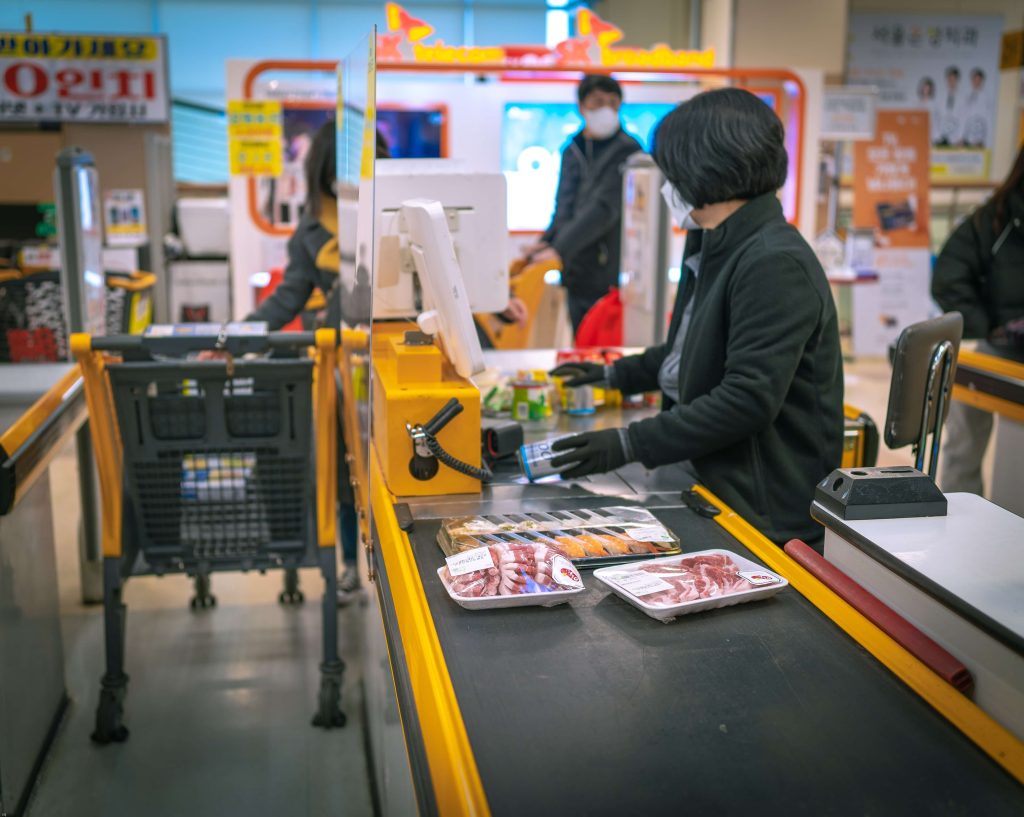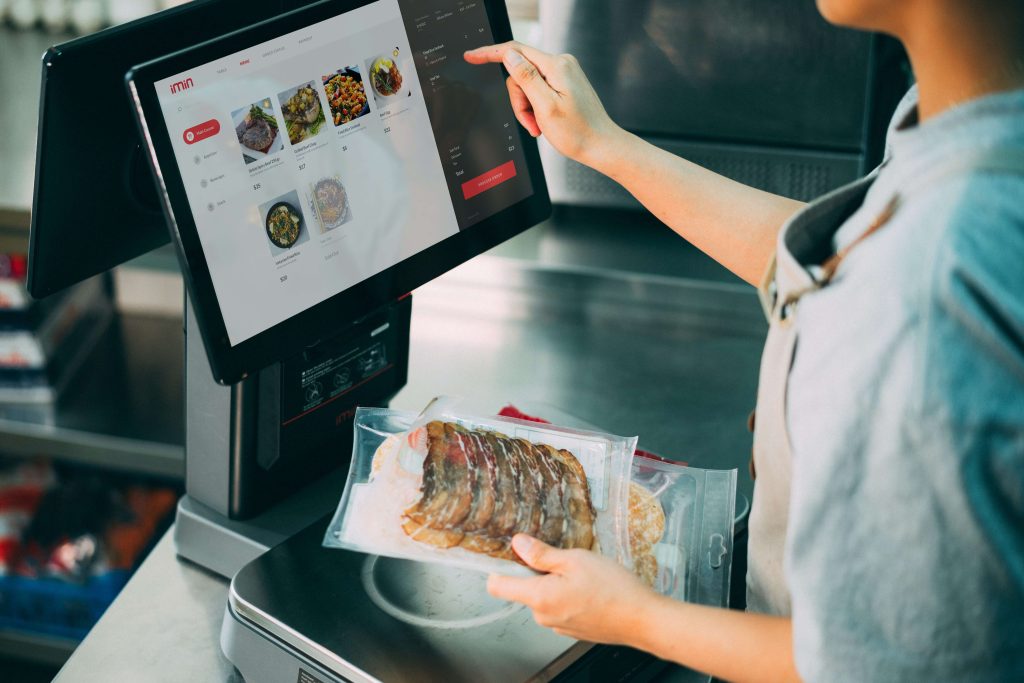Nowadays, it seems like the entire retail world is moving toward smart checkout scale stations with the hope of creating a more streamlined and frictionless experience for customers. But is this the right way to go for every business? After all, not every business is the same. They have different needs, different customers, and different business plans. In fact, it’s possible that sticking with traditional checkout methods is the best move for some, whereas others need to adapt to changing technologies so they don’t get left behind. If your business is unsure of what direction to go with this question, let’s take a look at some of the pros and cons of smart checkout and factors to consider when deciding whether smart checkout scale stations or traditional checkout methods are best for your business.
Is Space Limited?

Smart checkout machines offer a host of advantages, one of the most significant being their compact size. In fact, these machines require less space than traditional checkout counters, enabling five self-checkout kiosks to fit into the same area that previously accommodated just one or two traditional checkout counters. This transition from traditional checkout methods to smart checkout machines can unlock a considerable amount of space in a retail location. For businesses operating in cramped quarters, smart checkout technology can be a practical solution. The newfound space can be utilized to showcase more products, optimize the store layout, and as a result, boost sales.
The Staff Situation
Apart from being space-efficient, smart checkout technology can also ease the workload on employees, making it another compelling benefit. With five self-checkout stations taking up the same space as a single traditional checkout counter, a store may only require one employee to oversee five or more self-checkout stations. This means that employees who previously worked at checkout counters can be reassigned to other tasks, making their time and skills more productive. Moreover, with self-checkout in place, employees can assist customers with inquiries and other concerns, potentially leading to increased sales.
Additionally, self-checkout scale stations can help retailers save on staffing costs, which can prove to be a significant financial advantage in the long run. By transitioning to smart checkout methods, businesses can cut down on their staff expenses, thereby recouping their initial investment over time. In situations where finding employees is difficult, self-checkout stations can provide an effective solution by reducing the need for a large workforce. Instead of grappling with staffing issues, technology can come to the rescue, making the entire process smoother and more efficient.
Time Management
Along with staff and employee matters, time management is an important factor to consider when it comes to self-checkout machines. With traditional checkout methods, handling cash payments can lead to a range of issues, such as providing change for customers, counting the cash drawer, and making bank deposits with that cash. By contrast, all of these hassles are eliminated with self-service checkout. It's important to note that self-checkout also entails a shift to digital payments. This change can be beneficial for employees, managers, and small business owners as it helps eliminate much of the busy work associated with cash transactions. For businesses struggling with time management, transitioning to self-checkout machines can be an effective way to ease that burden.
Importance of Customer Service

As previously noted, utilizing smart checkout scale stations can free up employees to assist customers in other areas, leading to a more customer-friendly and service-oriented business. Studies have demonstrated that customers are more likely to purchase items if they have the chance to speak with someone beforehand. However, relying solely on self-checkout machines can be a double-edged sword. By reducing staff too much, customers may not have an opportunity to interact with any employees, potentially creating a dehumanizing experience.
While some customers might view a lack of interaction with staff as positive, it does pose a risk of impeding the development of a deeper connection between businesses and their customers, making it harder to build customer loyalty. Therefore, stores that are contemplating the adoption of self-checkout stations must find alternative ways of providing customer service and engagement.
By doing so, businesses can ensure that the introduction of self-checkout machines doesn't result in a loss of human interaction but rather offers a more efficient and streamlined experience that complements traditional customer service methods.
Traffic Flow
Before deciding to switch to self-checkout scale machines, businesses need to consider the current traffic flow of their stores. Self-checkout stations are best utilized in a retail setting that experiences high traffic flows or at least has periods of high traffic during the day. Self-checkout systems are designed to expedite a large volume of small transitions as quickly as possible, easing the burden on traditional checkout scale systems. Stores that have consistently high traffic or have seen a recent uptick in traffic will benefit the most from self-checkout stations. However, if traffic flow isn’t an issue, your business may not benefit from a self-checkout station as much as other businesses.
Are Your Products a Fit for a Smart Checkout Scale?
Self-checkout scale stations are best suited for certain types of products. For example, small items that can be quickly scanned and bagged are ideal for self-checkout systems, while larger items that are difficult to handle may not be a good fit. Additionally, products such as alcohol or tobacco that require age verification may not work well with self-checkout machines. High-end items are also not typically a good match due to security concerns. Businesses that sell small items or offer grab-and-go options are the most likely to benefit from self-checkout machines. That's why grocery stores, convenience stores, and fast-food chains have been successful in adopting self-checkout technology, while other types of businesses may not have products that are as well-suited to self-checkout scale machines.
Who Shops at Your Store?

When considering implementing self-checkout systems, it's important to take into account the age demographic of the business's customers. While younger generations have embraced this technology, older customers may not be as comfortable using it and could be more accustomed to traditional checkout methods. Thus, businesses catering to older customers may want to delay the transition to self-checkout options to avoid losing them. On the other hand, if a business has a mix of generations or primarily serves younger customers, implementing self-checkout systems may be a more viable option.
Are You Losing Customers?
In today's fast-paced shopping environment, businesses that are experiencing a decline in customers should consider the advantages of self-checkout machines. It's important to determine why customers are leaving, but the lack of self-checkout machines could be a contributing factor. Nowadays, shoppers are increasingly impatient and may seek out alternatives if they are forced to wait in line. By implementing smart-checkout systems, businesses can streamline the purchasing process and eliminate long lines, making the shopping experience more pleasant for customers. Additionally, if competitors are offering self-checkout options, it's imperative to keep up with them to stay relevant and meet customers' expectations. While some customers may be hesitant to use self-checkout scale machines, others expect this technology, and failing to provide it could lead to a loss of business.
Cost-Benefit Analysis
Before implementing self-checkout stations, a thorough cost-benefit analysis is crucial. This decision should not be taken lightly, as smart-checkout technology requires a significant upfront investment. However, the long-term benefits of increased sales and efficiency should eventually outweigh the initial costs. If the return on investment will take too long, it may not be the best time to make the switch. As we’ve previously discussed, not all businesses will see clear and immediate benefits from adopting self-checkout methods. With a cost-benefit analysis, a business can determine if implementing smart-checkout technology is a wise investment.
Keeping Your Options Open
In today's retail landscape, it's essential for businesses to consider implementing smart-checkout stations. While it may not be a one-size-fits-all solution, this technology can be a great fit for a variety of retail stores and business models. Even if businesses decide to keep some traditional checkout scale stations and adopt a hybrid approach with traditional and smart checkout methods, businesses can streamline their processes and create a more efficient experience for their customers. It's important to keep evaluating the variables we've discussed to determine the right time to make the switch to smart-checkout stations. Keeping an open mind and exploring the possibilities of smart-checkout technology can ultimately help businesses stay competitive in their industries.
On that note, want to discover our smart checkout scale solutions? We have a range of options to choose from. Depending on your business needs, you should be able to find the perfect solution for your business. Need help to pick? Reach out to us today! Our experts are always happy to help.




